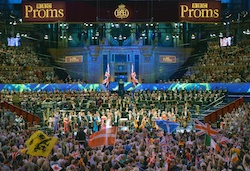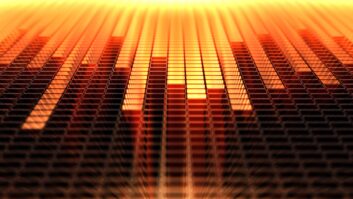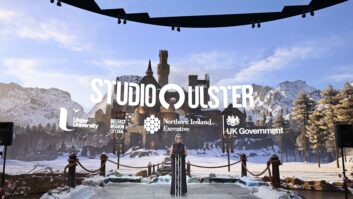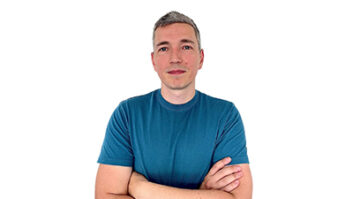
Although there are increasing synergies in kit and crew for shooting live music events in 3D and 2D, the BBC remains of the opinion that a separate editorial direction is desirable. In reviewing the live 3D transmission of The Last Night of The Proms, which was watched by 25,000 on BBC HD, series editor Oliver Macfarlane said: “While we may be able to converge more of the 2D and 3D operations in future I think we would always need two directors because the differences between the formats are substantial.” Macfarlane highlighted the slower cutting ratio desired for 3D in contrast to more varied shots used to edit the live 2D show. The live broadcast in September aired in 3D on BBC HD and was shown in a number of Odeon cinemas as well as the 2D version being simulcast in two parts on BBC2 (where it was viewed by 1.25 million) and BBC1 (where part two was watched by 3.2 million viewers). While SIS Live provided the OB facilities for the 2012 Proms programming, a dedicated truck from Telegenic was brought in for the 3D component. A mix of Pulsars, TS5 and TS2 rigs from 3Ality Digital were deployed with convergence controlled by Sony MPE-200 boxes under the supervision of stereographer Adam Sculthorp. “The big challenge was how to get extra cameras into the Albert Hall given that there were 12-13 cameras already in situ for the 2D coverage,” said Macfarlane. “It was clear that we couldn’t do two completely separate operations so we decided to produce the 3D largely as a sub-mix of the 2D.” Six existing camera positions were shared between the productions with an additional two cameras augmenting the 3D. The 2D feed was mixed from 15 cameras. Directing scripts for classical music concerts are typically prepared in advance so that the director knows when different sections of the orchestra are performing, and therefore when to plot coverage. In practice for The Last Night of The Proms this meant allowing the 3D director access to the script so that they too could prepare in advance when shared camera positions would be deployed and when it was necessary to introduce the exclusive 3D cameras. “While we used a lot of close-ups with cameras in the Bull Run (artist’s entrance area), on the conductor and on a jib in the stalls we also found that the Albert Hall looked spectacular in wide shot,” said Macfarlane. “The perspective you get with the audience in the foreground and mid-ground and the architecture of the building in the distance was amazing and gave a special sense of presence.” – Adrian Pennington Photograph: by Chris Christodoulou – showing the BBC Symphony Orchestra and Chorus conducted by Jiří Bělohlávek with soloist Nicola Benedetti.






